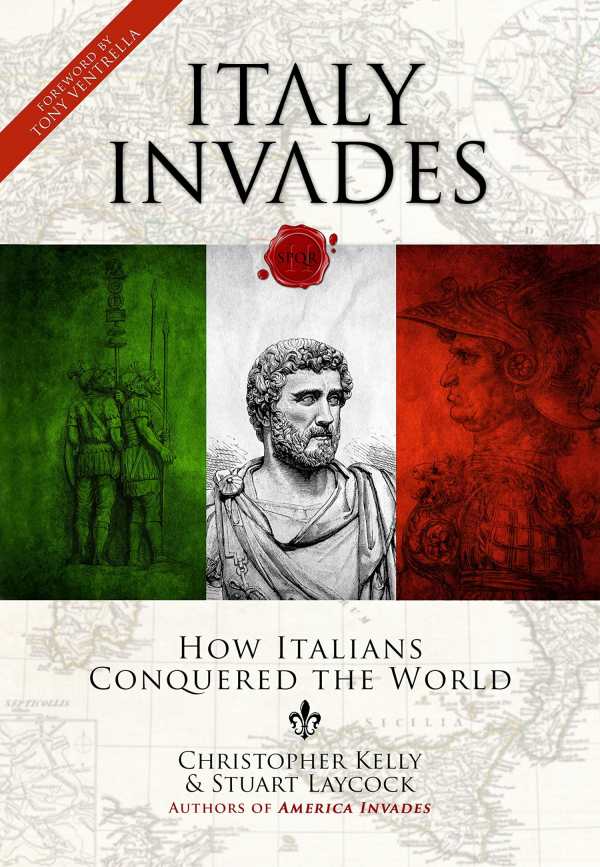Italy Invades
How Italians Conquered the World
This accessible encyclopedia of Italy’s military and cultural influence over the centuries is a lively, conversational book full of surprising facts.
“Italy has had a troubled, sometimes tragic, history. Rome lived by the sword and died by the sword,” Christopher Kelly observes in the introduction to his second work of military history co-authored with Stuart Laycock, Italy Invades: How Italians Conquered the World. Nowadays Italy tends to have more of a cultural impact on the world than a military one; Kelly calls this “the softer side of globalization.” Proceeding country by country, the authors give a comprehensive picture of Italy’s global reach.
The book is structured as an alphabetical list of the world’s countries, from Afghanistan to Zimbabwe. Each section is a tiny snapshot of Italy’s involvement abroad, encapsulating in one to five pages the connections between Italians and the country in question. There are many familiar names here, such as Caesar, Garibaldi, and Marco Polo. For several countries, like the United States and Caribbean republics, Christopher Columbus is the Italian link. Along with exploration, some major reasons for historical crossover were trade, war, colonialism, and immigration.
Kelly and Laycock’s previous book, America Invades, was subtitled “How We’ve Invaded or Been Militarily Involved with Almost Every Country on Earth,” and they aim to be similarly exhaustive here. Although the main focus is still military, this one takes a broader, generic approach to Italian influence. So there’s the Magellan expedition trading with East Timor in 1522, Jesuits visiting Nepal in 1662, and ancient Roman coins turning up in unexpected places like Iceland and Latvia.
At times, it feels as if the authors are grasping at straws, as when, in the segment on Canada, they note that “singer Michael Bublé ‘invades’ concert halls around the world and is one of the most famous Italian Canadians alive today.” The information can also be rather speculative in places. A number of sections open with statements that make what follows seem somewhat irrelevant, such as “Italy has not had much military involvement, if any, with Bhutan” and “It seems unlikely that many Romans made it as far as Cameroon.” In these cases, perhaps it would be better to skip the one-paragraph write-ups altogether and focus instead on those countries that do have extensive links with Italy, such as Greece, the United Kingdom, and the United States.
Nonetheless, this is a lively, conversational book full of surprising facts. For instance, who knew pasta is now the Somalian national dish (where it is called baasto)? The final quarter of the book is devoted to excellent supplementary materials: maps, a glossary of names and phrases, a thorough index, and sixteen pages of color photographs of famous sites and statues. This is an essential title for the reference shelf of any Italophile.
Reviewed by
Rebecca Foster
Disclosure: This article is not an endorsement, but a review. The publisher of this book provided free copies of the book and paid a small fee to have their book reviewed by a professional reviewer. Foreword Reviews and Clarion Reviews make no guarantee that the publisher will receive a positive review. Foreword Magazine, Inc. is disclosing this in accordance with the Federal Trade Commission’s 16 CFR, Part 255.

